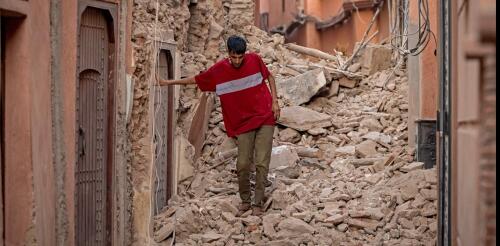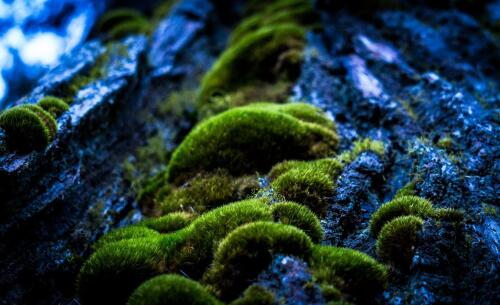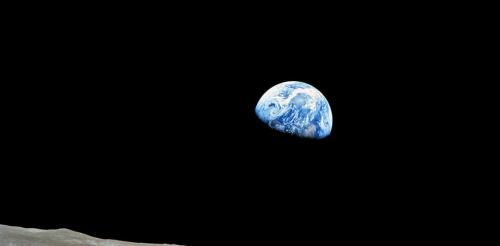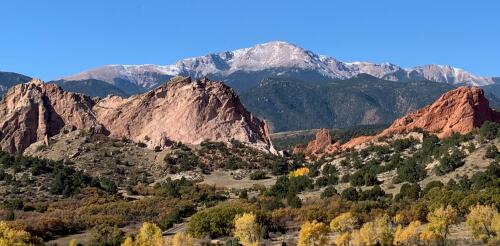Earth
Earthquakes, large and small, happen every single day along zones that wrap around the world like seams on a baseball. Most don’t bother anybody, so they don’t make the news. But every now and then a catastrophic earthquake hits people somewhere in the world with horrific destruction and immense suffering. On Oct. 7, 2023, a 6.3 magnitude earthquake struck near the historic city of Herat, Afghanistan, leaving more than 1,000 people dead in the rubble, according to estimates. It was followed by two more earthquakes, just as powerful, on Oct. 11 and Oct. 15. A few weeks earlier, on Sept. 8, a 6.8 magnitude earthquake shook ancient villages apart in the Atlas Mountains of Morocco, killing nearly 3,000 people. In February 2023, a large area of Turkey and Syria was devastated by two major earthquakes that hit in close succession. As a geologist, I study the forces that cause earthquakes. Here’s why some seismic zones are very active while others may be quiet for ge...
Protecting and restoring forests is one of the cheapest and most effective options for mitigating the carbon emissions heating Earth. Since the third UN climate change summit, held in 1997 in Kyoto, Japan, different mechanisms have been trialed to raise money and help countries reduce deforestation and restore degraded forests. First there was Koyoto’s clean development mechanism, then the UN-REDD program initiated at COP13 in Bali in 2008. Voluntary carbon market schemes came into effect after COP21 in Paris in 2015, but all met with limited success. In some cases, these schemes interfered with communities that have tended and nurtured forests for generations, restricting their access to the forest for fuel, grazing, and food. Meanwhile, deforestation has proceeded under the aegis of global markets hungry for beef, palm oil, and other commodities. The world is far off track to reduce deforestation to zero by 2030, or me...
Curious Kids is a series for children of all ages. If you have a question you’d like an expert to answer, send it to curiouskidsus@theconversation.com. Will the Earth last forever? – Solomon, age 5, California Everything that has a beginning has an end. But the Earth will last for a very long time, and its end will come billions of years after anyone who is alive here now is gone. Before we talk about the future of our planet, let’s review its history and when life appeared on it. The history of human beings is very, very short compared with that of Earth. 4 billion years old Our planet formed from a giant cloud of gas and dust in space, which is called a nebula, about 4.6 billion years ago. The first continent might have formed on its surface as early as 4.4 billion years ago. The atmosphere of the early Earth did not contain oxygen, so it would have been toxic to hum...
Curious Kids is a series for children of all ages. If you have a question you’d like an expert to answer, send it to curiouskidsus@theconversation.com. Why does the Earth spin? Sara H., age 5, New Paltz, New York A globe was the first thing I ever bought with my own money. I was maybe 5 years old, and I was really excited to take it home. As I quickly discovered, you can spin it in the direction that the earth actually spins. There’s an imaginary line between the North Pole and the South Pole. We call it the rotation axis. For the Earth, the rotation axis points toward a bright star, Polaris, which is visible on clear nights in the Northern Hemisphere. Satellite images over one day show Earth rotating on its axis. NASA/EPIC, edit by Tdadamemd If you want to know which way to spin your globe, make the...
Around 700 million years ago, the Earth cooled so much that scientists believe massive ice sheets encased the entire planet like a giant snowball. This global deep freeze, known as Snowball Earth, endured for tens of millions of years. Yet, miraculously, early life not only held on, but thrived. When the ice melted and the ground thawed, complex multicellular life emerged, eventually leading to life-forms we recognize today. The Snowball Earth hypothesis has been largely based on evidence from sedimentary rocks exposed in areas that once were along coastlines and shallow seas, as well as climate modeling. Physical evidence that ice sheets covered the interior of continents in warm equatorial regions had eluded scientists – until now. In new research published in the Proceedings of the National Academy of Sciences, our team of geologists describes the missing link, found in an unusual pebbly sandstone encapsulated within the granite that forms Colorado’s Pikes Peak....




